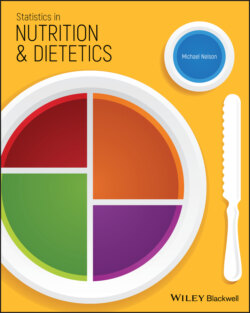Читать книгу Statistics in Nutrition and Dietetics - Michael Nelson - Страница 39
BOX 1.4 Bradford Hill hierarchy of causality
Оглавление| Strength of association | Is the evidence linking exposure and outcome strong? We shall see what we mean by ‘strong’ as we explore the different statistical tests used to evaluate associations. |
| Consistency of association across studies | Are the same associations seen repeatedly in different groups or across different populations in different places and times? |
| Specificity | Is there a specific link between exposure and outcome? |
| Temporal association | Does A precede B? Evidence needs to show that cause (A) is followed by consequence (B). As we shall see, A and B may be associated in a cross‐sectional analysis of data, but unless a clear time‐sequence can be established, the evidence for causality is weak. |
| Dose‐response | Does increased exposure result in increased likelihood of the outcome? If fruit and vegetable consumption is protective against heart disease, can it be shown that the more fruit and vegetables are eaten, the lower the risk of disease? |
| Plausible mechanism and coherence | Is there a clear physiological explanation for the observed link between A and B? What is it in fruit and vegetables that affect the factors that determine risk of heart disease? Does the new evidence fit in with what is already known? If not, why not? Are there any animal models that support evidence in humans? |
| Experimental evidence | Does experimental evidence based on intervention studies support the argument for causation? Is the experimental evidence consistent across studies? |
| Analogy | Are there related exposures or conditions that offer insight into the observed association? |
We have seen earlier that the logic used to support notions of causality may be inductive or deductive. Whichever logical model is used, no single study in nutrition will provide conclusive evidence of the relationship between A and B. There is a hierarchy of evidence, first set out clearly by Bradford Hill [4, 5], which suggests that a clear picture of causality can only be built from multiple pieces of evidence (Box 1.4). Published over 50 years ago, these criteria have withstood the test of time [6].
